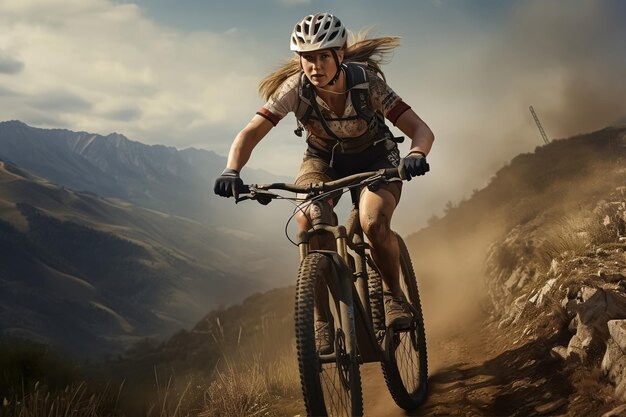
“That’s a sharp-looking e-bike.”
My friends and family shared the same first impression of the Engwe M20 as I did. Though style is subjective, the M20 stands out as a high-value option based on objective criteria. Even at its full list price, it’s a great deal for a dual-suspension e-bike with dual batteries. Engwe often offers discounts, making it an even better bargain.
The M20 may not be the fastest e-bike out there, and at 104 pounds with both batteries installed, it’s definitely not the lightest. But if you’re on the lookout for an e-bike that offers excellent value, ease of riding, and a decent range, the M20 should be on your list.
The e-bike is equipped with a 48V brushless rear hub motor, delivering 750 watts of continuous power and a peak output of 1,000 watts. It has a maximum torque of 55 Nm, which is adequate for regular riding but falls short on steep hills.
Engwe ships the M20 in Class II mode, which caps the power-assisted speed at 20 miles per hour. You can use either pedal assistance or throttle control with the right handgrip’s full-twist throttle. Despite its motorcycle-like appearance, the M20 isn’t a high-performance e-bike with lots of torque.
I used the control buttons on Engwe’s display screen to switch the e-bike to Class III mode, raising the power cut-off level to 28 mph. While I never hit 28 mph on the display, I easily maintained speeds between 24 to 26 mph on flat surfaces. You could theoretically go faster by pedaling harder, but I doubt many people would do that.
Engwe rates the M20 for riders between 5 feet 2 inches and 6 feet 2 inches tall. At 5 feet 8 inches, right in the middle of the suggested range, I found pedaling awkward and uncomfortable due to my knees rising too high. The motorcycle-style seat doesn’t offer any adjustment. The bike features a basic Shimano 7-speed gear set, but I didn’t use it much because I wasn’t keen on pedaling.
The M20 has adjustable front forks and a single rear air shock mounted under the seat in a setup similar to a soft tail configuration seen on Harley-Davidsons. I set the front forks to the softest position, which absorbed more impact than the rear shock. You’ll appreciate this setup when hitting speed bumps or curbs, as opposed to a rigid rear setup.
Deflating the 20-inch diameter, 4-inch-wide fat tires below their maximum inflation improved the ride by allowing the tires to flex. The camel-colored seat looks good but is surprisingly hard, which doesn’t add to comfort. The seat angles toward the front, which can cause you to hit the back of the battery casing during hard stops.
The M20’s front and rear disc brakes worked well for moderate and emergency stops, but they are mechanical rather than hydraulic. The 160 mm disc rotors are just the minimum you’d want for a bike capable of reaching 28 mph. Larger 180 mm rotors and hydraulic brakes would be a significant upgrade.
A unique feature of the M20 is its vertically mounted dual LED headlights: one serves as a daytime running light and the other as a full-brightness headlamp. Both lights can be adjusted individually, and you can switch between them using a handlebar switch when it gets dark. The rear taillight brightens when you brake, similar to a car, which is a good safety feature. However, it lacks turn signals and a strong horn.
While it might look like a small motorcycle, the Engwe M20 is more of a leisurely cruiser than a high-performance e-bike like the Ariel Grizzly. I often chose the M20 for short trips or errands. The handlebars are set high, and the geometry of the seat, pedals, and handlebars allows for a comfortable upright riding position.
Unlike some e-bikes that deliver full torque immediately when you twist the throttle or pedal, the Engwe M20 has a more relaxed power delivery with a short delay when you twist the throttle. The delay is even longer with pedal assistance, which can be annoying if you expect instant acceleration when pedaling hard from a stop.
The M20 rides on 20-inch mag wheels with 4-inch-wide fat tires that have a slightly knobby tread. These tires perform reasonably well on both pavement and off-road on grass or hard-packed dirt paths.
I tested the dual-battery configuration, but you can get the M20 with a single 48V 13Ah lithium-ion battery for $300 less. Engwe claims that each battery can last up to 47 miles, although in real-world usage with frequent throttle use, you can expect about 50% to 60% of that range. If range is more important to you than acceleration or top speed, the dual battery setup is not only desirable but also more practical. The bike comes with a single 2 amp charger, taking about 6.5 hours to fully charge each battery. If you use the M20 regularly, buying a second charger is a good idea.
Engwe offers various options and accessories for the M20. Though not crucial, I equipped my bike with optional dual mirrors, a smartphone holder, and a rear rack with a bag that has water-resistant pannier bags and a rain cover. The panniers aren’t large enough for a full week’s groceries, but they can hold a few days’ supplies or essentials for a short trip.
Overall, the Engwe M20 with dual batteries is a stylish e-bike offering power, range, and comfort for casual cruising or fun rides. Even at its $1,500 list price, it’s a good deal, especially with the convenience of two batteries and a dual-suspension setup.
This bike isn’t meant for mountain trails or competing with the fastest e-bikes, but if you want a moped-style e-bike for solo or group rides, the M20 is an excellent choice. You might also consider the Juiced Bike Scorpion X2 or the Lectric XP 30 for casual riding, but neither has the Engwe M20’s cool cruiser look, dual batteries, or full suspension.